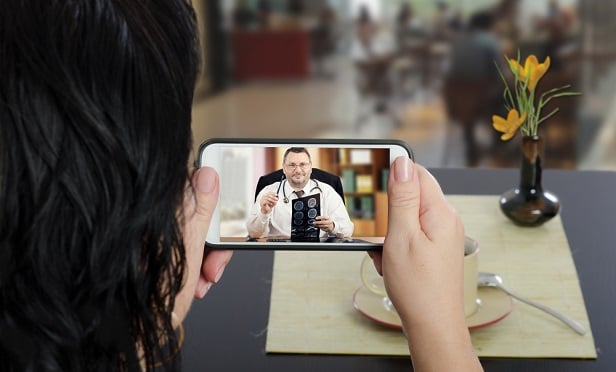 From 2014 to 2018, usage of non-hospital-based provider-to-patient telemedicine grew more rapidly in urban than rural areas. (Photo: Shutterstock)
From 2014 to 2018, usage of non-hospital-based provider-to-patient telemedicine grew more rapidly in urban than rural areas. (Photo: Shutterstock)
Telemedicine — particularly outside of the hospital setting — is exploding, according to FAIR Health's white paper, “A Multilayered Analysis of Telehealth – How This Emerging Venue of Care Is Affecting the Healthcare Landscape.”
FAIR Health analyzed more than 29 billion private health care claim records in its repository and found that non-hospital-based provider-to-patient telemedicine from 2014 to 2018 grew 1,393 percent (from 0.007 percent to 0.104 percent of all medical claim lines) vastly more so than the other types of telemedicine: follow-up calls after patients are discharged from inpatient hospital stays; physician calls made patients visiting hospital emergency departments or admitted as inpatients; and calls between health care professionals for consultation purposes.
For all types of telemedicine within that same time period, usage grew 624 percent, from 0.0192 percent to 0.1394 percent of all medical claim lines, according to the analysis.
Related: More physicians are embracing telemedicine
The top three reasons why people used telemedicine outside of the hospital setting were for acute upper respiratory infections with symptoms such as sinus inflammation and sore throat; mood disorders such as depression; and anxiety and other nonpsychotic mental disorders – mirroring the top reasons why people typically visit their primary doctor's office.
Other common reasons why people used non-hospital telemedicine include for injury, poisoning and other consequences of external causes; urinary system issues and health services related to reproduction.
Other key findings of FAIR Health's analysis include:
- From 2014 to 2018, usage of non-hospital-based provider-to-patient telemedicine grew more rapidly in urban than rural areas. In urban areas, claim lines for this type of telemedicine increased 1,227 percent from 0.01 percent to 0.13 percent of all urban medical claim lines. In rural areas, the increase was 897 percent from 0.01 percent to 0.05 percent of all rural medical claim lines
- During that same time period, the age group most associated with telemedicine overall was that of individuals age 31-40, who accounted for 21 percent of the distribution of all telemedicine claim lines. But most of the claim lines (82 percent) for discharge-related provider-to-patient telemedicine were associated with individuals 51 and older.
- Sixty-five percent of all telemedicine claim lines in that same time period were associated with females. But for telemedicine visits associated with a hospital discharge, 53 percent of claim lines were submitted for females.
- In 2018, the telemedicine diagnosis with the highest rate of patients who had an in-person visit within 15 days of a non-hospital-based provider-to-patient telemedicine visit for the same or a very similar diagnosis was heart failure. Of patients diagnosed with this condition via telemedicine, 57 percent were seen in person within 15 days.
Read more:
© 2025 ALM Global, LLC, All Rights Reserved. Request academic re-use from www.copyright.com. All other uses, submit a request to [email protected]. For more information visit Asset & Logo Licensing.








